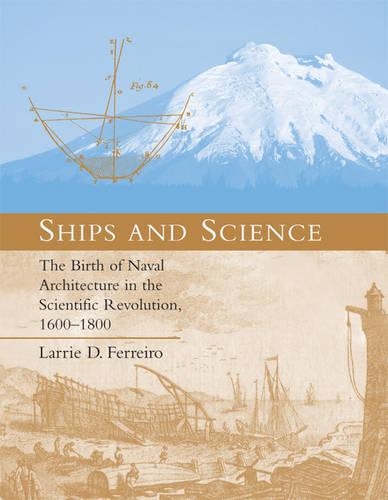
Ships and Science: The Birth of Naval Architecture in the Scientific Revolution, 1600-1800
(Paperback)
Publishing Details
Ships and Science: The Birth of Naval Architecture in the Scientific Revolution, 1600-1800
By (Author) Larrie D. Ferreiro
MIT Press Ltd
MIT Press
22nd January 2010
United States
Classifications
General
Non Fiction
History of engineering and technology
Naval forces and warfare
Maritime history
623.8109
Physical Properties
Paperback
472
Width 178mm, Height 229mm, Spine 19mm
748g
Description
The first book to portray the birth of naval architecture as an integral part of the Scientific Revolution, examining its development and application across the major shipbuilding nations of Europe."Naval architecture was born in the mountains of Peru, in the mind of a French astronomer named Pierre Bouguer who never built a ship in his life." So writes Larrie Ferreiro at the beginning of this pioneering work on the science of naval architecture. Bouguer's monumental book Traite du navire (Treatise of the Ship) founded a discipline that defined not the rules for building a ship but the theories and tools to predict a ship's characteristics and performance before it was built. In Ships and Science, Ferreiro argues that the birth of naval architecture formed an integral part of the Scientific Revolution. Using Bouguer's work as a cornerstone, Ferreiro traces the intriguing and often unexpected development of this new discipline and describes its practical application to ship design in the seventeenth and eighteenth centuries. Drawing on previously untapped primary-source and archival information, he places the development of naval architecture in the contexts of science, navy, and society, across the major shipbuilding nations of Britain, France, Spain, the Netherlands, Sweden, Denmark, and Italy. Ferreiro describes the formulation of the three major elements of ship theory (the science of explaining the physical behavior of a ship)- maneuvering and sail theory, ship resistance and hydrodynamics, and stability theory. He considers the era's influential books on naval architecture and describes the professionalization of ship constructors that is the true legacy of this period. Finally, looking from the viewpoints of both the constructor and the naval administrator, he explains why the development of ship theory was encouraged, financed, and used in naval shipbuilding. A generous selection of rarely seen archival images accompanies the text.
Reviews
Ships and Science is a meticulously researched, scholarly book...Any maritime historian or maritime architecture scholar should benefit from reading this erudite, thought-provoking book.
Louis Arthur Norton, The Northern MarinerThis volume should be required reading for all students of naval architecture.
Marine TechnologyThis is a superb volume, and is likely to be regarded in coming years as the starting point of the now fast growing study of the foundations of applied science and engineering.
Fred M. Walker, Mariner's MirrorHighly recommended.
ChoiceAuthor Bio
Larrie D. Ferreiro is a naval architect and historian who served for more than thirty-five years in the US Navy, the US Coast Guard, and the Department of Defense. An Adjunct Professor of Engineering and History at George Mason University, he is the author of the award-winning Ships and Science (MIT Press) and Brothers in Arms, a Pulitzer Prize finalist in History.
